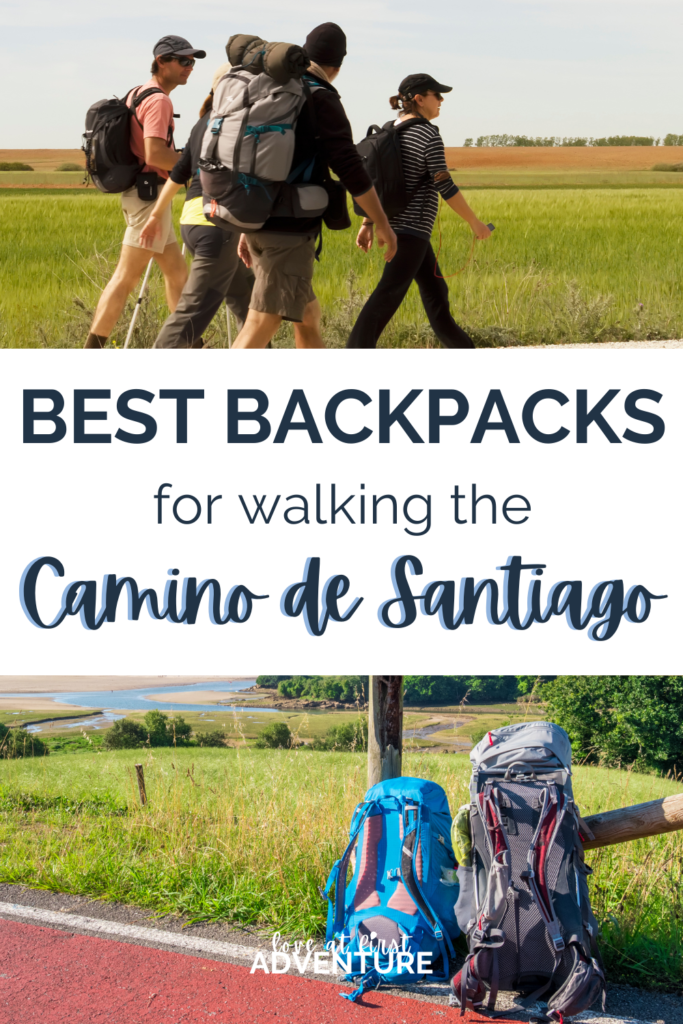12 Best Backpacks for the Camino de Santiago & How to Choose (2023)
Disclosure: Some of the links in this article are affiliate links. If you make a purchase after clicking a link, I may receive a small commission.
Are you looking for the best backpack for the Camino de Santiago? Find out all about the best Camino backpacks, features to look for, how to get the best fit for your body, and more!
Choosing the best backpack for the Camino de Santiago is critical for a comfortable trek on the 500-mile pilgrimage trail to Santiago de Compostela — after all, you’ll be carrying your Camino backpack day in and day out for weeks.
But, buying a backpack for the Camino can be daunting. You have so many questions: What size backpack do you need for the Camino? What is the best backpack for the Camino? Is there really a difference between men’s and women’s backpacks?
Top 3 Picks for Camino de Santiago Backpacks:
- Best Woman’s Backpack for the Camino: Osprey Kyte 36
- Best Men’s Backpack for the Camino: Osprey Stratos 36
- Best Lightweight Backpack for the Camino: Osprey Exos 38 Backpack
These are excellent questions to ask. And preparing is of utmost importance so you don’t accidentally make a big purchase on a pack that hurts your back, digs into your shoulders, or doesn’t have enough space.
Prior to my first Camino, I heavily researched and tried out multiple backpacks. But it wasn’t until after I walked the Camino de Santiago that I truly understood what features are important when it comes to selecting a Camino de Santiago backpack.
To help you find the perfect backpack for the road to Santiago, we’ve put together a list of the best backpacks for the Camino de Santiago, information on how to choose a backpack, tips for getting the best fit, and more!
Best Camino Backpacks Comparison Chart
| Name | Image | Gender/Size | Weight | Highlights | Price |
|---|---|---|---|---|---|
| Osprey Kyte 36 | 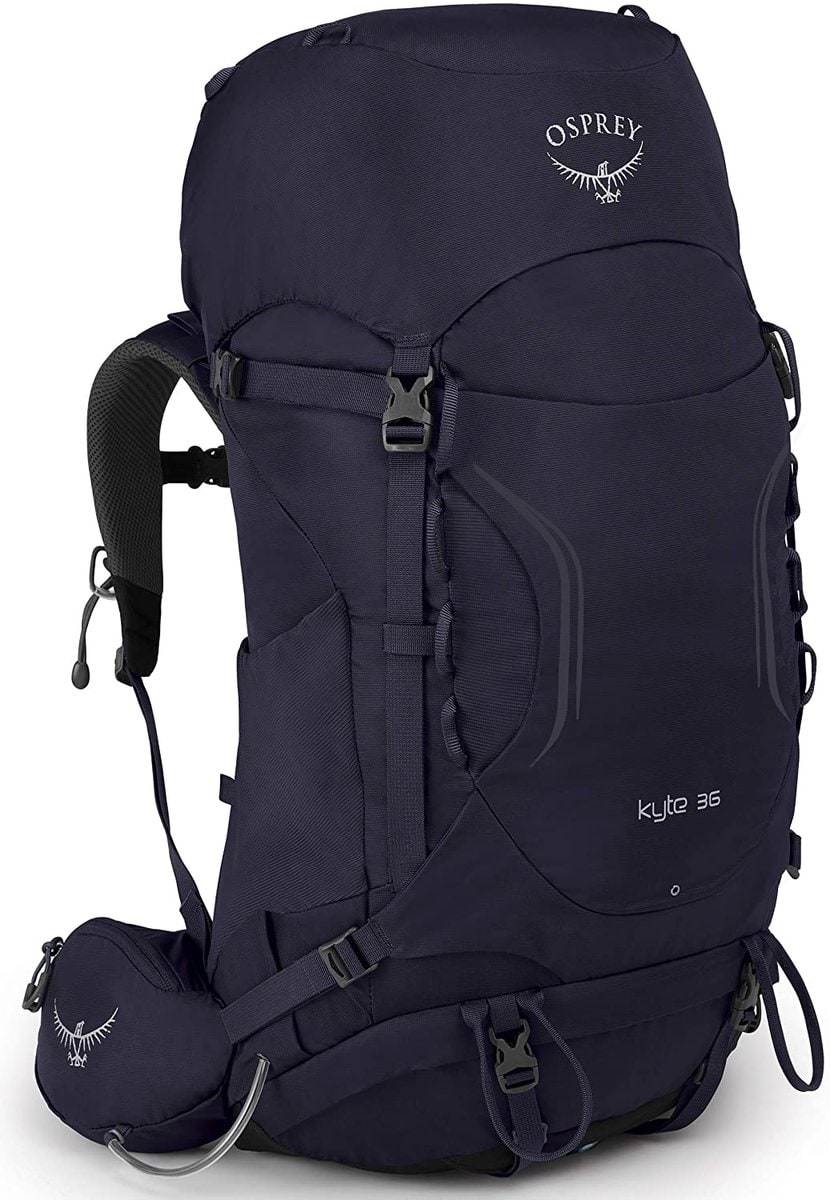 | Women’s XS/S S/M | 3.05-3.23 lb (1.38-1.47 kg) | ✔ Airspace back panel ✔ Padded mesh hip belt ✔ Zippered sleeping bag compartment | Check availability & price on Amazon $$$ |
| Osprey Sirrus 36 | 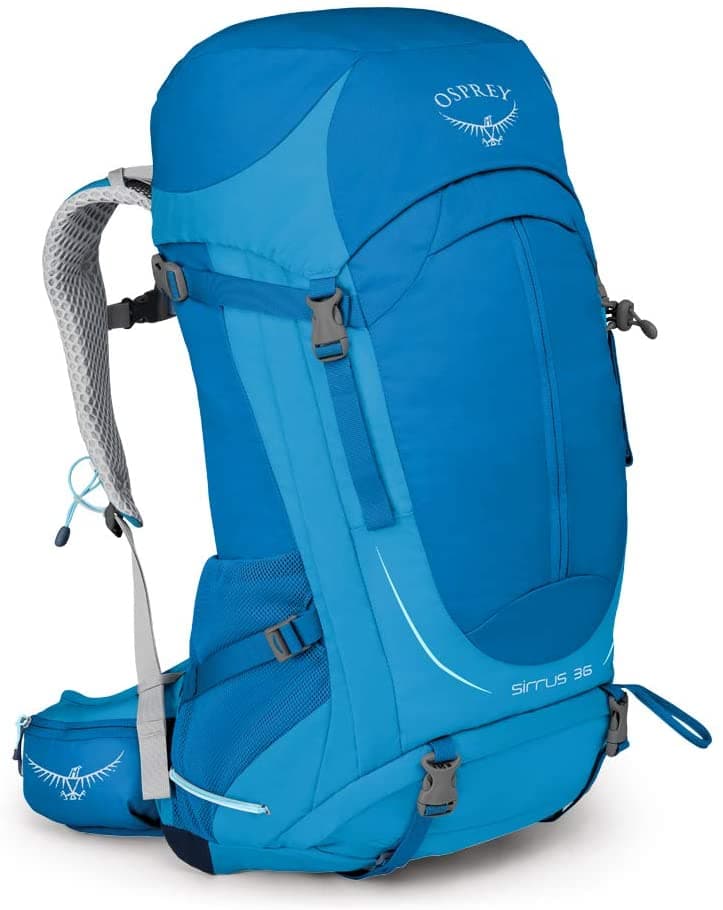 | Women’s XS/S S/M | 3.07-3.2 lb (1.39-1.45 kg) | ✔ Size zipper access ✔ Front zipper panel ✔ Trekking pole stowage ✔ Rain cover | Check price on Amazon $$$ |
| Gregory Jade 38 | 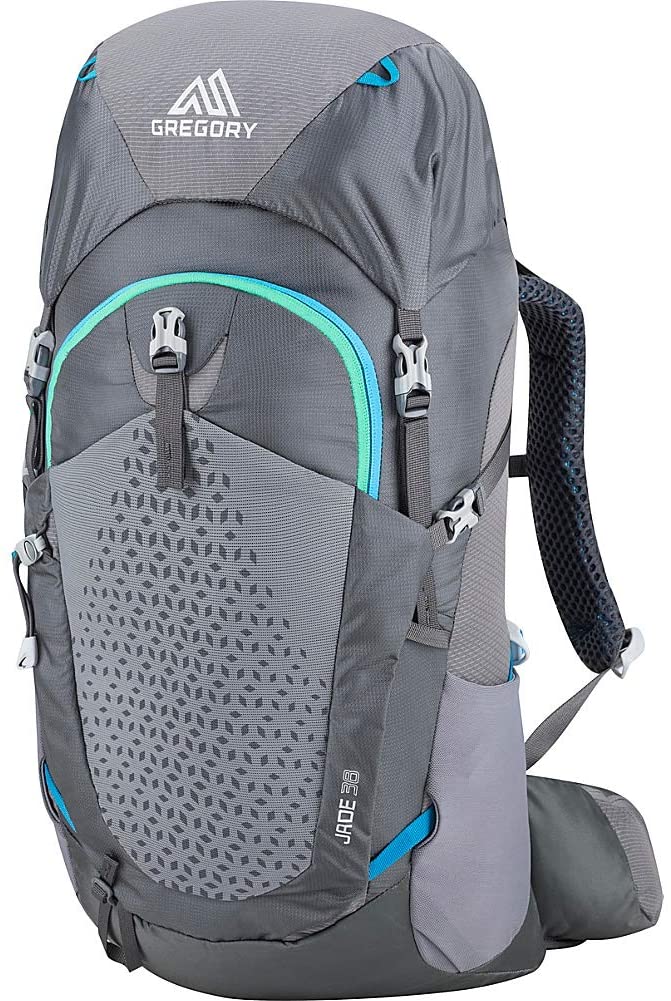 | Women’s XS/S S/M | 2.75-2.78 lb (1.25-1.26 kg) | ✔ FreeFloat panels allow hipbelt to pivot with/natural movements ✔ Carry-on dimensions when fully packed | Check price on Amazon $$$ |
| Gregory Amber 34 | 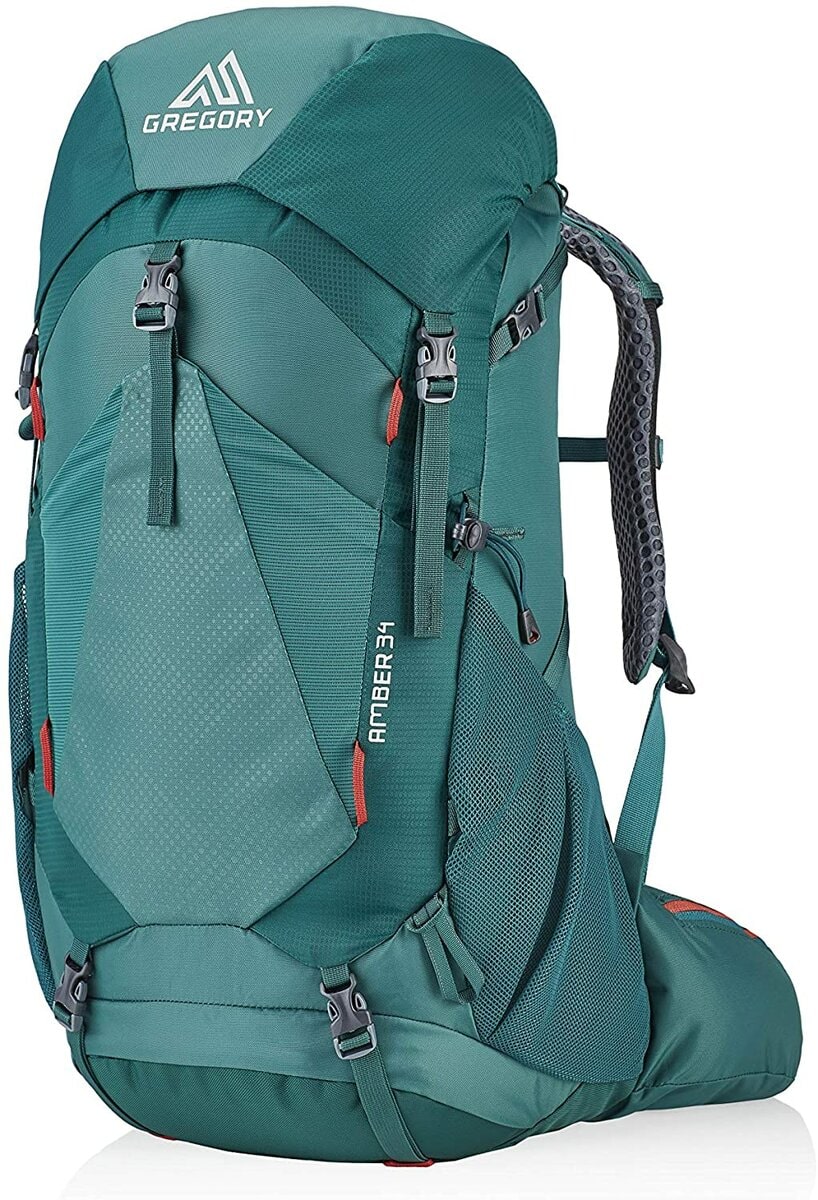 | Women’s One Size | 2.72 lb (1.23 kg) | ✔ Adjustable torso-Top and bottom access ✔ Women’s specific padded shoulders and hip belt-hip pockets | Check price on Amazon $$$ |
| Deuter Futura Pro 34 SL | 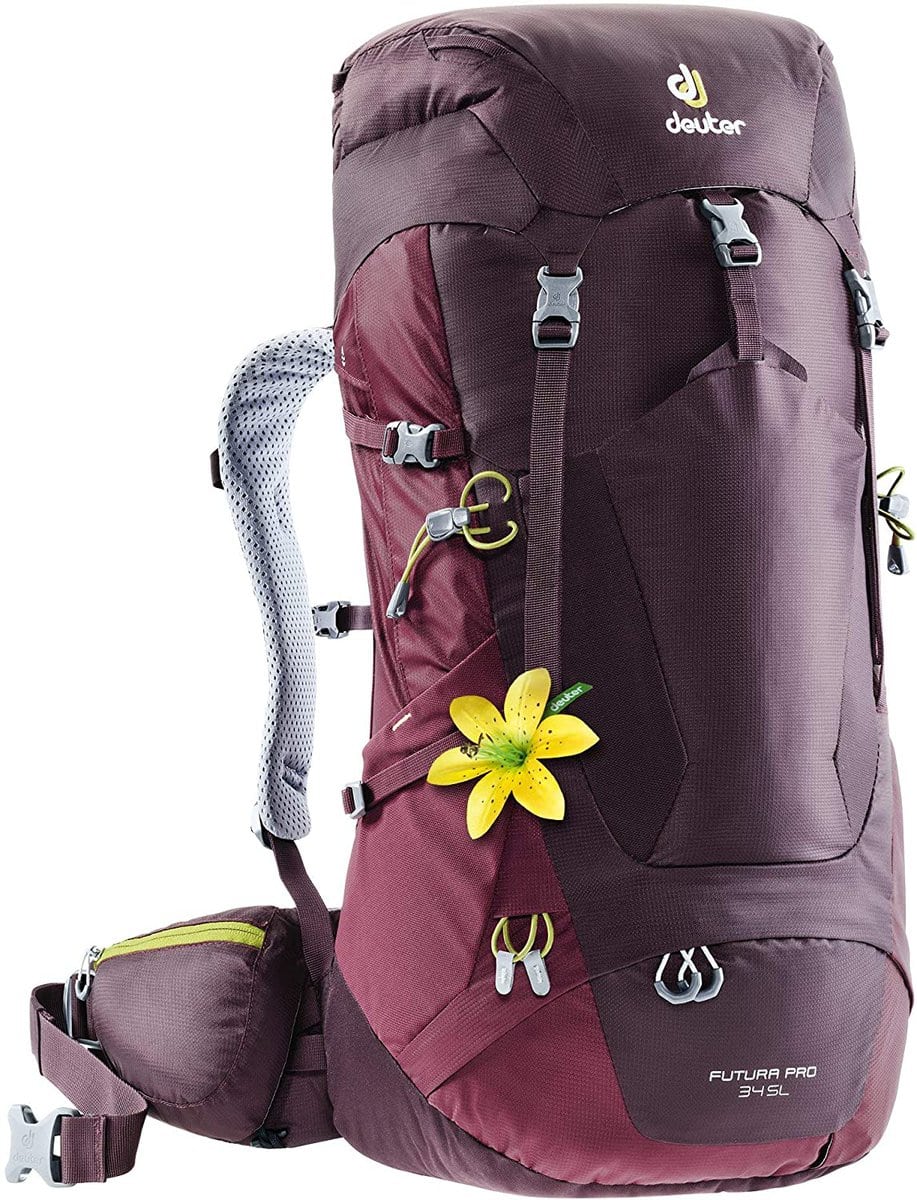 | Women’s One Size | 2.56 lb (1.56 kg) | ✔ High-performance weather-repellant materials ✔ ergonomic | Check price on Amazon $$$ |
| Kelty Redwing 36 |  | Women’s One Size | 2 lbs 9 oz (1.16 kg) | ✔ Lots of pockets for organization ✔ Affordable ✔ U-Zip opening | Check price on Amazon $$ |
| Osprey Stratos 36 | 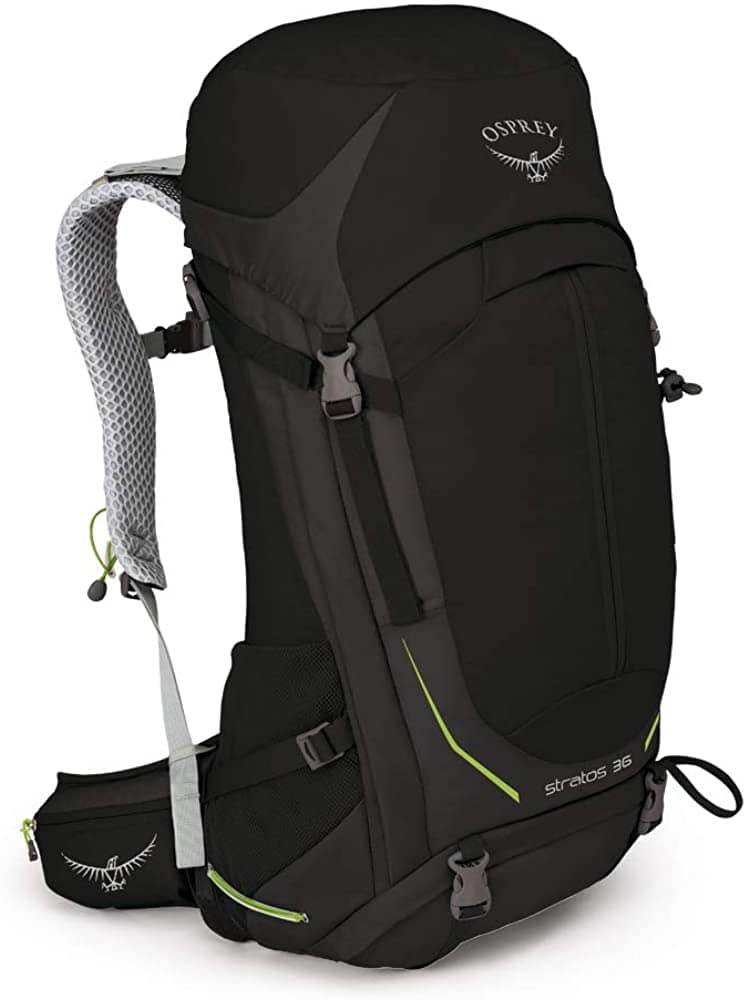 | Men’s S/M or M/L w/adjustable torso | 3.17 – 3.23 lb (1.44 – 1.5 kg) | ✔ External pockets ✔ Zippered access to main compartment ✔ Suspension system keeps pack off your back | Check price on Amazon $$$ |
| Osprey Kestral 38 | 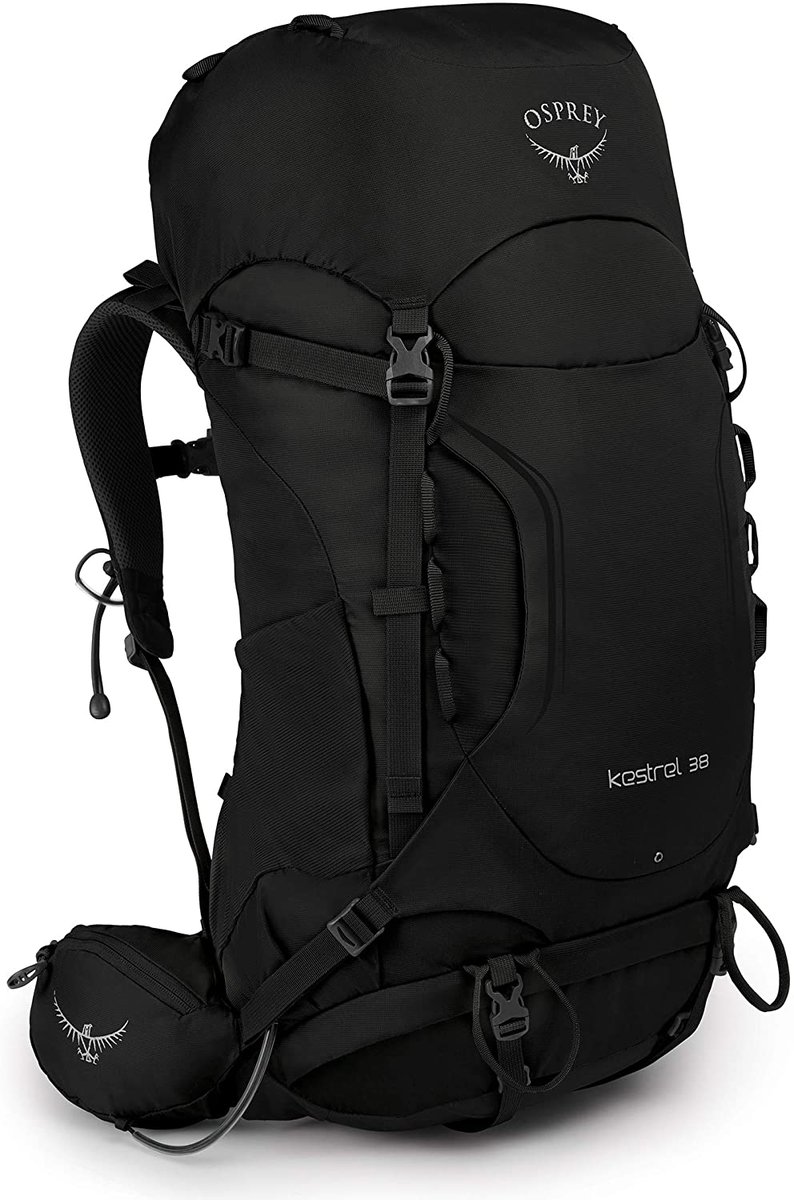 | Men’s S/M or M/L w/adjustable torso | 3.22 – 3.4 lb (1.46-1.81 kg) | ✔ Ventilated back panel ✔ Reverse compression straps ✔ Rugged, yet compact | Check price on Amazon $$$ |
| Osprey Exos 38 | 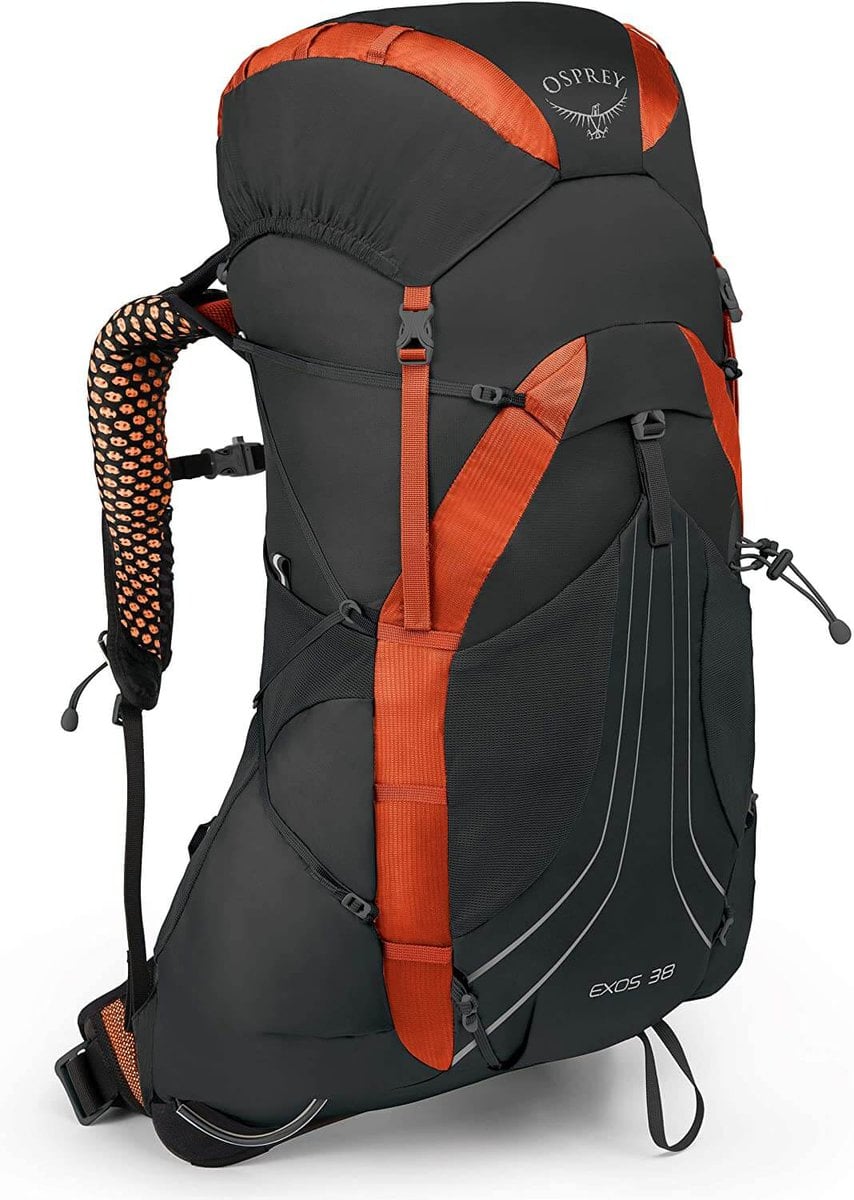 | Men’s S, M, or L | 2.46-2.51 lb (1.12-1.14 kg) | ✔ Integrated flapJacket ✔ Inside out compression straps | Check price on Amazon $$$ |
| Gregory Zulu 40 | 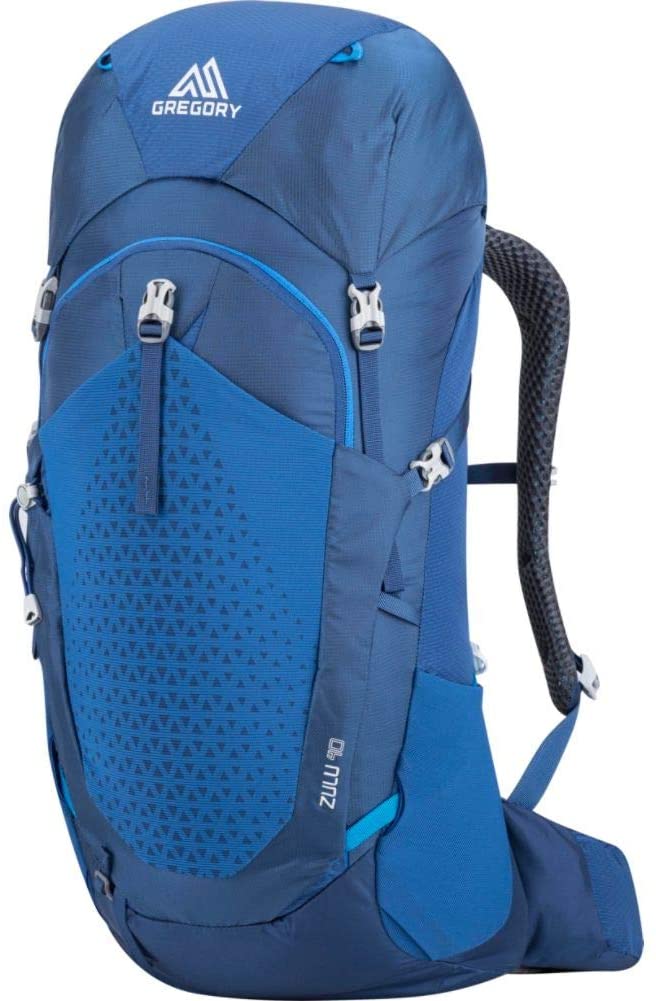 | Men’s S/M or M/L with adjustable torso | 2.9-2.93 lb (1.32-1.33 kg) | ✔ Good for long torso up to 22” | Check price on Amazon $$$ |
| Gregory Stout 45 | 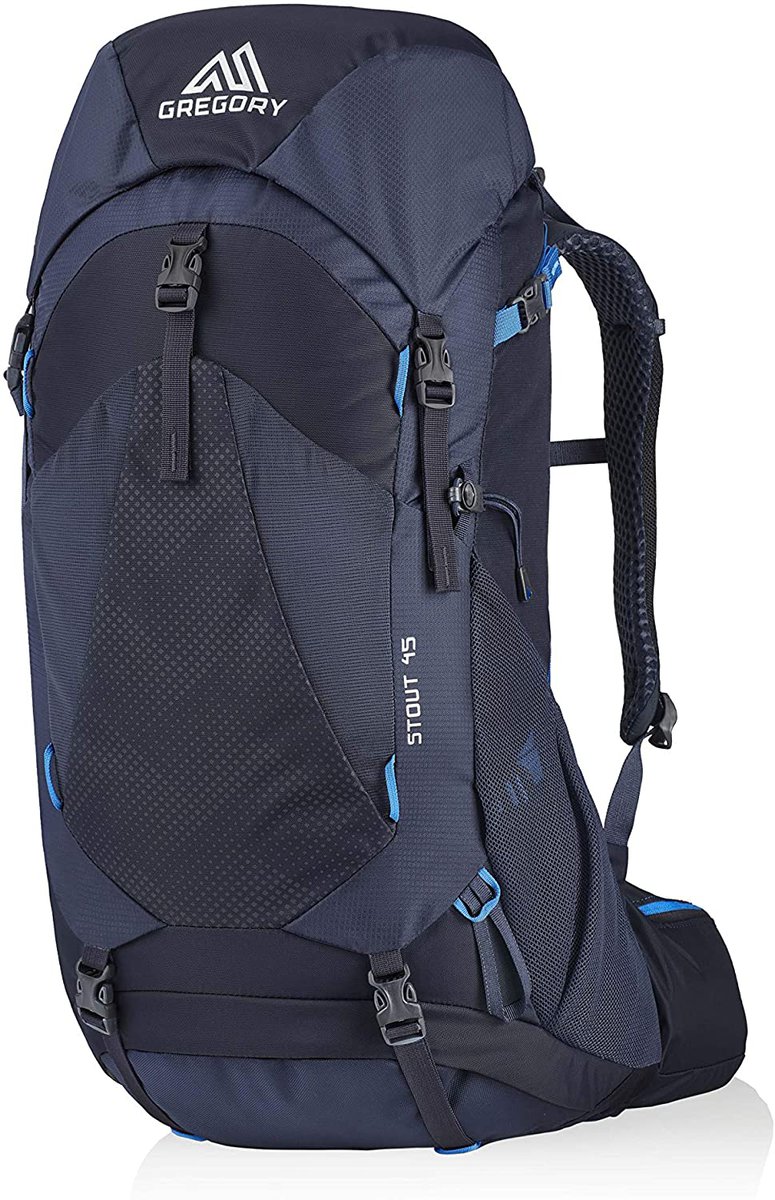 | Men’s One Size or Plus Size | 2.96 lb (1.34 kg) | ✔ Adjustable torso ✔ Has all the features you need and more | Check price on Amazon $$$ |
| Osprey Levity 45 | 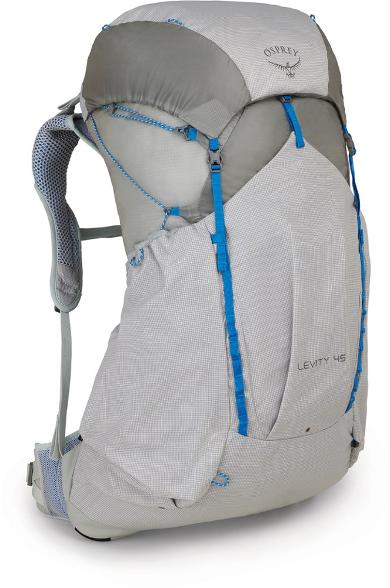 | Men’s S, M, or L | 1.79-1.93 lb (.81-.87 kg) | ✔ Ultralight ✔ Sits well on hips | Check price on Amazon $$$$ |
| Gossamer Gear Gorilla 50 | 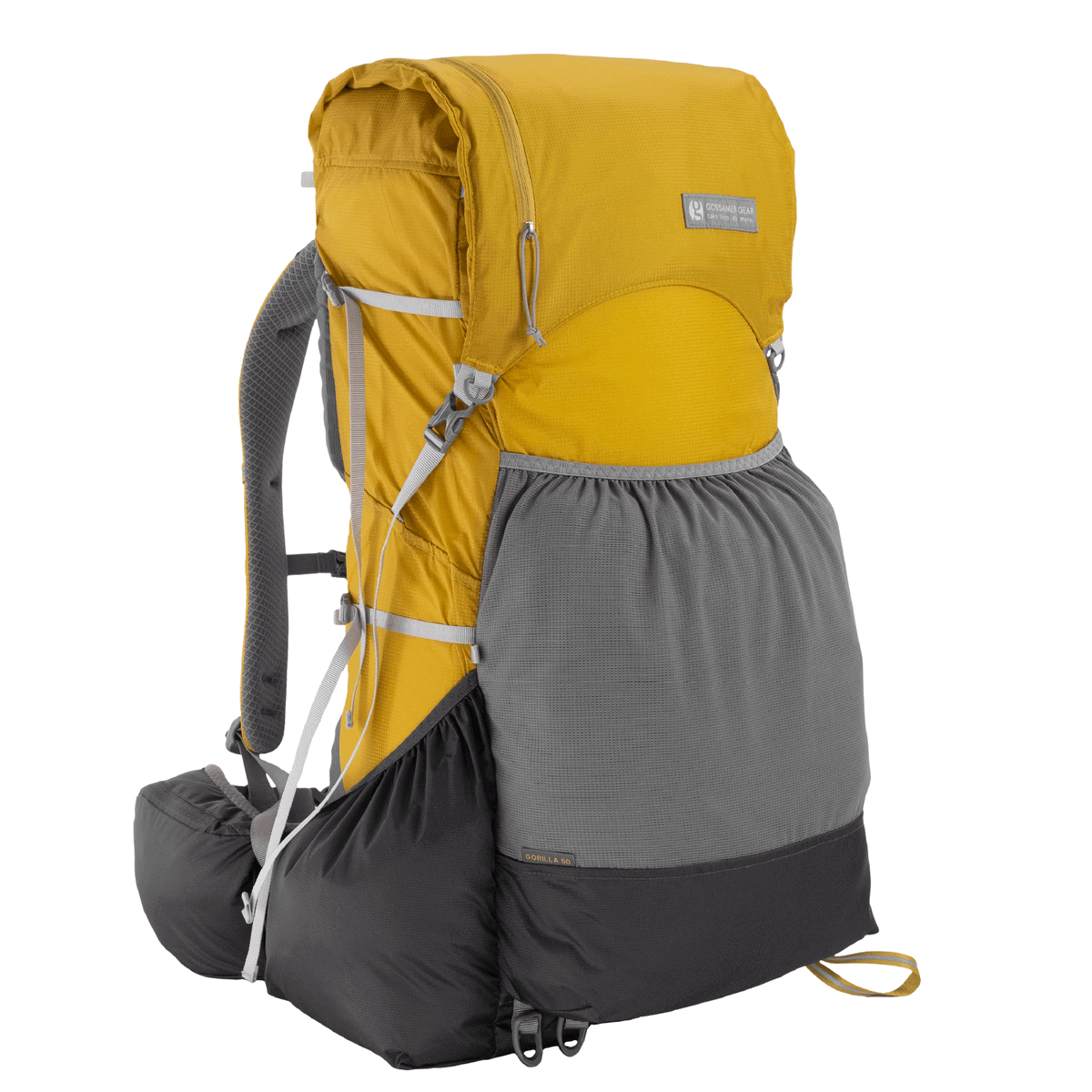 | Unisex S, M, or L | 1.76-1.96 lb (.8-.89 kg) | ✔ Mesh stuff pocket great for drying ✔ Various pack and hip belt sizes | Check price on Gossamer Gear $$$$ |
Best Women’s Backpacks for the Camino de Santiago
These days, many outdoor brands make women’s specific fit backpacks.
Generally, women’s hiking backpacks are narrower through the shoulder straps. The torso lengths are also shorter and hip placements are designed for a woman’s body.
Here are our top Camino backpack recommendations for women:
Osprey Kyte 36

Osprey Kyte 36 Details:
✔ Pros: Adjustable torso length | Front trekking pole stowage | Two Sizes
❌ Cons: Dark, boring colors
Features:
- Adjustable torso length
- Multiple attachment straps and chains
- Hip pockets for small items like chapstick
- Side zipper access to main compartment
- Stuff-it front pocket for jacket
- Rain cover included
In our opinion, this is the best backpack for the Camino de Santiago. Its many features allow you to carry all the gear you need for your trek while staying organized on the ever-changing trail.
The Osprey Kyte is a classic bag that sits close to the back, allowing you to keep your balance as you traverse various terrain each day. Its padded mesh straps, hip belt, and proprietary airflow system provide the ultimate comfort while wicking moisture.
This top-loading bag has a zippered top flap for items you need to access often. It also has a zippered sleeping bag compartment for carrying a sleeping bag (in the cooler months) or other items you’d like to keep separate from the main compartment, like hiking sandals.
As long as this pack fits your body well, it’s a great choice! (Choose from either size, or even check out the men’s version, the Kestral 38.) Also, Oprey offers a wonderful guarantee.
Osprey Sirrus 36

Osprey Sirrus 36 Details:
Pros: Adjustable torso | Two sizes | Seamless back and hip panel
Cons: No stuff-it pocket
Features:
- Trampoline back panel
- Size zipper access
- Stow-on-the-Go trekking pole attachment
- Integrated rain cover
- Zippered sleeping bag compartment that can be opened into the main compartment
With just a few different features from the Kyte, this is another great option for walking the Camino. It’s small dimensions (24 x 11 x 9 inches) make it great for carry-on travel.
The Osprey Sirrus is a daypack is a lightweight bag with a trampoline back panel. It’s padded, mesh back and hip panel runs as one continuous panel, reducing the risk of chafing.
This top-loading, size zipper bag has a zippered top flap for items you need to access often. It also has a zippered sleeping bag compartment for carrying a sleeping bag (in the cooler months) or other items you’d like to keep separate from the main compartment, like hiking sandals. The diver can be opened to create one continuous main panel.
Oprey offers a wonderful guarantee (look it up).
As long as this pack fits your body well, it’s a great choice!
Gregory Jade 38

Gregory Jade 38 Details:
Pros: Adjustable shoulder straps | U-Zip Access | FreeFloat Suspension
Cons: A little hard to pull out water bottle
Features:
- 3D comfort cradle hipbelt provides padding in the right places to reduce hot spots
- Open-air ventilated back panel with moisture wicking mesh keeps your back dry
- Sunglass QuickStow system on shoulder harness for quick, scratch-free access to your shades
- Dual side stretch mesh pockets with pass-through for over or under compression.
- Up to 35 lbs in carry weight, making it a great option for day hikes where you need gear
- Raincover included
- Attachment loop and upper shock lock for trekking poles
The Gregory Jade 38 had so many features that are not always found on packs its size! First, it features a breathable FreeFloat dynamic suspension system. Paired with an alloy and fiberglass construction, this pack moves with you as you hike.
This bag has both top and front loading options. Holding close to 40L, there is plenty of space for your clothes, toiletries, hiking sandals, and various cool weather items like a sleeping bag. It also has two side pockets, two lid pockets, and a stuff pocket.
One cool thing about this pack is that it has adjustable shoulders and comes in multiple torso lengths. Plus, Gregory also offers their packs in multiple sizes! For instance, they make a Jade 33 which is very similar. Between the adjustable shoulder straps, torso lengths, and sizes, you’re sure to find a wonderful fit!
If this pack fits your body, consider going with it!
Gregory Amber 34

Gregory Amber 34 Details:
Pros: Hip pockets | Compartment access from top and bottom | Quick-pull drawcord closure
Cons: Only comes in one size
Features:
- Torso w/3D Foam breathable back panel is adjustable by 4”
- Women’s specific fit
- Perforated, breathable shoulder harness with sternum strap and integrated safety whistle
- Raincover included in dedicated zippered pocket for added organization
- Zippered bottom sleeping bag compartment
- Trekking pole attachments with bungee closure system
The Gregory Amber 34 features a Wishbone frame which allows for stable load and torsional flexibility. Due to the women’s specific fit, breathable back panel, and perforated shoulder harness, it’s another great pack for all day wear.
This bag is top-loading with compression straps across the top. It’s main compartment is also accessed from the bottom, where you’ll find a removable divider. There are two pockets on the top flap, one for the included raincover. But, of course, you can store things in there as well. For being a smaller pack, it really does have all the features of a larger pack!
Since this pack only comes in one size, consider the Amber 44 as well. This pack is essentially the same, only larger. Plus, it’s even available in Plus Size. Plus Size features extended length shoulder straps and hip belts and other revisions to fit larger body shapes!
Deuter Futura Pro 34 SL

Deuter Futura Pro 34 SL Details:
Pros: Ergonomic carry comfort | Made from partially recycled materials | Lots of pockets & loops
Cons: Weighs a few ounces more than competitors
Features:
- Innovative Aircomfort Sensic Pro mesh for maximum back ventilation
- Round profile frame made of permanently elastic spring steel
- Separate bottom compartment with removable base
- Pull-forward hip fins with pockets
- Elasticated inner compartment for storing wet/sweaty clothing or water reservoir
- Walking pole holder
- Rain cover included
The SL back length of the Deuter Futura Pro 34 SL is specifically tailored to women. Usually, women have shorter backs than men. Coupled with a trapezoid-shaped lumbar pad, this pack ensures the load is spread evenly across the musculoskeletal system. Because of these features, your pelvis can move freely, safely, and comfortably on multi-day tours.
This pack is top loading with a separate sleeping bag compartment that can be zipped closed. It features a top pocket, side pockets, and a stuff pocket. If you ever plan to ride bike, it even has attachments for a helmet holder.
In addition to great features, Deuter is environmental and health conscious. They use 50% recycled yarn. Additionally, they no longer use PFC to coat their bags against water, dirt, and grease. Instead, they use DWR Impregnation. According to their website, DWR is safer for health and the environment.
If ergonomics and health/environment are your thing, this could be your new pack!
Kelty Redwing 36

Kelty Redwing 36 Details:
Pros: U-Zip Access | Side pockets w/pass-through functionality | Travel-friendly
Cons: Bungee stash system isn’t as useful as mesh stuff pocket | Rain cover sold separately
Features:
- AMP-Flow ventilated back panel to keep you cool
- Advanced perimeter frame for superb stability
- Hybrid U-zipper entry for top or panel loading
- Signature wing side pockets with pass-through functionality
- Small zipper front pocket
- Top pocket & two mesh water bottle holders
This Kelty classic is now available in a women’s specific 36L. It’s frame and ventilated back panel are formulated for all day comfort.
This pack is U loading, which makes it easy to load up and find items that are packed further down without removing everything. This pack features two side wing pockets, which are great for organization. For example, we carried all of our food in one and first aid in the other! There’s also space between the side wing pockets and the main compartment so you can stow your trekking poles on days when you don’t need easy access to them, like on travel days.
A good thing about this Kelty pack is it’s also great for travel. If you’re doing a trip where you’re traveling a good bit and then doing a shorter Camino, this is a great option due to its versatility.
All in all, if you’re looking for a budget backpack with lots of organizational features, this is an amazing choice.
Best Men’s Backpacks for the Camino de Santiago
Men’s packs are typically larger, longer, and wider than women’s specific packs. That being said, we recommend you choose the pack that best fits your body type. Over the years, we have met many women who prefer men’s (also considered Unisex) packs when they were the best option.
Below are our top picks for men’s backpacks.
Osprey Stratos 36

Osprey Stratos 36 Details:
Pros: Adjustable shoulder harness | Lightweight for a pack w/so many features | Main compartment accessible from top and side
Cons: Hip pockets too small | Pack doesn’t sit upright when full
Features:
- Ventilated backpanel with adjustable shoulder harness for the perfect fit
- Front panel with two zippered stash pockets plus hip pockets
- Stretch mesh water bottle holders on both sides
- Stow-On-The-Go Trekking pole attachment
- Integrated and removable raincover
- Zippered sleeping bag compartment with bellowed divider
The Osprey Stratos 36 features a trampoline-style back that will keep the pack away from your back. Is this doesn’t keep you cool, what will?
The main compartment is accessible both from the top and via a side zipper, which can be super useful if you need to reach something you accidentally packed away without opening the entire pack. On the top flap, there are two zippers — one accessible from the outside by reaching up and back, and one from the inside.
Of course the compression straps, trekking pole holders, and a zippered front pocket are all great for adjusting the pack and staying organized.
Overall, the Stratos 36 is a great pack made of quality materials and will last you for years to come!
Osprey Kestral 38

Osprey Kestral 38 Details:
Pros: Breathable back panel | Soft edgeless padded mesh
Cons: Some features that aren’t needed for the Camino, like an external water reservoir
Features:
- Ventilated backpanel with adjustable shoulder harness for the perfect fit
- Front panel with two zippered stash pockets plus hip pockets
- Stretch mesh water bottle holders on both sides
- Stow-On-The-Go Trekking pole attachment
- Integrated and removable raincover
- Zippered sleeping bag compartment with bellowed divider
The rugged Osprey Kestral 38 is perfect for long days that don’t require much room. It’s rugged construction is great for any condition (conditions often change on the Camino). The Airspace back panel and adjustable torso lengths all but ensure a perfect, comfortable fit in any climate.
This a top loading pack with a zippered sleeping compartment (complete with removable divider). It features everything you need like a stash pocket, top pockets, hip pockets, and trekking pole attachments.
This pack is designed for rugged adventures (Their website mentions bushwacking, which is not a requirement on the Camino!). Thus, it may feature a few more features than you need — an external reservoir sleeve, sleeping bag straps (removeable), and reverse compression straps, for instance. But, it’s still a contender given it’s compact size.
If you plan to do some bushwacking after the pilgrimage, by all means, check out the Kestral 38! It’s larger brother, the Kestral 48 features a full length side pocket and side access to the main compartment. That could be an option if the 38 is too snug.
Osprey Exos 38

Osprey Exos 38 Details:
Pros: Large side and front pockets | Ultralight | Trekking pole attachment on straps
Cons: No hip belt pockets | No raincover included
Features:
- Tensioned ventilated backpanel keeps the weight of the pack off your back
- Removable floating lid with top-and under-lid zippered pockets for storing smaller items
- InsideOut side compression straps
- Front stretch mesh pocket, side mesh pockets
- Stow-on-the-Go trekking pole attachment on front straps
- Web loop attachment points on top lid for external gear storage
The Osprey Exos 38 is considered an ultralight pack. However, it’s still able to carry up to 30 lbs and is relatively affordable and durable compared to other ultralight packs. Since it’s considered an ultralight pack, it assumes you may want to remove the top lid and excess straps. Therefore, it has an integrated FlapJacket to protect your gear when the lid is removed. However, you’ll likely want to use the top pockets, so that feature doesn’t mean much to us!
The tensioned backpanel keeps the weight in the pack off of your back. Therefore, you’ll be in for a highly ventilated, comfortable day of hiking. You can access the pack from the top only, so be sure to pack everything you need to access frequently in the top pocket or your fanny pack.
This bag comes in three sizes – Small, Medium, and Large. The large fits 41L of gear. If you need a slightly larger pack to fit your clothes (or body!), we recommend checking out the Exos 48, which is designed to carry 40 lbs.
Gregory Zulu 40

Gregory Zulu 40 Details:
Pros: Large mesh water bottle pockets hold 1.5L bottles | Bright colors | Good for long torso
Cons: Custom molded zippers are a nice feature, but impossible to lock
Features:
- Ventilated suspension allows airflow between your back and the pack
- 3D foam hip cradle and breathable back panel
- Front U-Zip for access to the main compartment without opening the top
- Stretch pockets on front and sides
- Sunglass QuickStow so you don’t scratch your glasses
- Adjustable attachment loop and upper shock lock for trekking poles
The Gregory Zulu 40 comes in two sizes. With an adjustable torso, it will fit many body types. Looking for something slightly larger? Check out the same pack in 55 L.
As long as this pack fits your body well, it’s a great choice!
Gregory Stout 45

Gregory Stout 45 Details:
Pros: Large hip pockets | Super padded hipbelt and harness | Available in Plus Size
Cons: One Size | Water bottle pockets a little stiff
Features:
- Adjustable torso length and 3D foam breathable back panel
- Padded wraparound hipbelt with large zippered pockets
- Perforated, breathable shoulder harness with sternum strap
- Zippered top pocket with underside zippered raincover pocket and key clip
- Quick-pull drawcord closure, top webbing compression, plus a zippered bottom compartment
- Adjustable attachment loop and upper shock lock for trekking poles
The Gregory Stout 45 is durable and versatile pack for your adventure. With it’s Wishbone alloy frame, it offers stability and load support for a full day of hiking. Plus, the wraparound hip belt and perforated shoulder straps offer maximum breathability and comfort.
This pack has all the features you need and more without being too large. You can easily compress this down from the top and sides. There are even passthrough holes on the water bottle pockets so that you can easily attach things to the pack if needed. There’s zipper access from the bottom, useful in the cooler months when you’ll bring a lightweight sleeping bag.
Some pilgrims prefer the slightly smaller Stout 35. Still, others choose the Plus Size version of this pack which had been adjusted to accommodate larger body sizes.
Best Ultralight Backpacks for the Camino
The consensus is that you don’t need an ultralight pack for the Camino. To start, you won’t be carrying much gear. Essentially, you’ll carry one extra set of clothing, shower and/or hiking sandals, toiletries, first aid, and water. Plus, there are plentiful stops to refuel, whereas if you were going on in the backcountry for several days, you’d need everything on you.
It’s more important that you are comfortable because the days can be quite long. That may mean another pound or two in the pack itself to give you features like a luxuriously padded hip belt!
This aside, we know several of you prefer ultralight packs. Thus, we asked around to our ultralight pilgrims, and they recommended the following packs for the pilgrimage.
Osprey Levity 45

Osprey Levity Details:
Pros: Large side pockets | Ultralight | Trekking pole attachment on straps
Cons: Hip belt not very padded | Lighter material may be less durable long-term
Features:
- Tensioned ventilated backpanel
- Removable floating lid with top-and under-lid zippered pockets for storing smaller items
- Stow-on-the-Go trekking pole attachment so you don’t have to remove your pack to stow your poles
- Front stretch mesh pocket, side mesh pockets, hipbelt pockets, energy gel pockets
- Stow-on-the-Go trekking pole attachment
The Osprey Levity 45 is an ultralight pack. Just be sure to keep that base weight low if opting for this pack as it’s total carry weight is just 25lbs. The shape of this pack is slightly wider near the hips, helping to distribute the weight properly.
The tensioned backpanel keeps the weight in the pack off of your back. The pack is only accessible from the top, but there are large pockets on the front and back of the pack for easy access. The material is thin, similar to tent material. The Camino isn’t too rugged, so this shouldn’t be a problem, though.
This bag comes in three sizes – Small, Medium, and Large. The large fits 48L of gear. If you’re a fan of Osprey, the Exos line is a great alternative. Slightly heavier, yet more durable and with more features, we love the Exos!
Gossamer Gear Gorilla 50
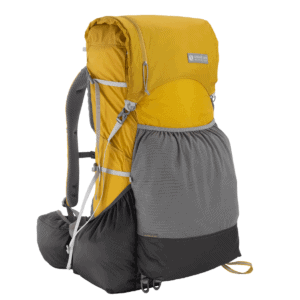
Gossamer Gear Gorilla 50 Details:
Pros: Gorgeous | Unisex | Multiple belt sizes available
Cons: If you need another belt size, you must purchase it separately | No load lifters
Features:
- Unisex belt formulated for superior load transfer and comfort
- Ergonomic harness
- Water bottle pockets that are accessible while wearing
- Air-mesh fabric for less friction
- Trekking pole storage
- Carries 30 lbs or less
The Gorilla 50 is a super versatile pack that plan-ahead hikers love. Featuring a unisex, ergonomic harness and hip belt, this pack is designed to transfer the load properly.
The interior of the pack fits 32 L, but you can extend the top an additional 10 L by unrolling it. Although you probably won’t need to do so, it’s always nice to have the option should you want to purchase souvenirs or travel more after your trip. There are another 18L of storage in the outside pockets and large, useful hip belt pockets that are easy to reach.
Gossamer offers other unique features like attachable umbrellas. Check out their full site for more info.
Although the pack is unisex, it can fit a range of sizes — The Small, Medium, and Large fit anywhere from 11.5″ – 23.5″ (29 – 60+ cm) torso!
Why it’s Important to Choose a Good Backpack
On the Camino, you’ll walk an average of 12-18 miles (20-29km) per day! Unless you’re used to walking with a heavy pack, that is a lot of time to put additional weight on your feet and body!
This is why it’s important to invest in a lightweight and well-fitted backpack.
A good pack will help you avoid unnecessary stress on your back, shoulders, or knees. This is because hiking backpacks are designed for carrying weight over long distances — features like hip belts and other straps distribute the majority of the weight onto your hips and legs, allowing you to walk for hours with little to no discomfort!
How to Choose the Best Backpack for the Camino

Choosing a backpack isn’t the easiest feat. There are many options on the market. Here are some of the key features to consider in choosing an awesome Camino pack.
Best Backpack Size for the Camino
When it comes to Camino de Santiago backpack size, we recommend you go with a 30-40L backpack.
This size pack allows you to bring everything you need — which is just the essentials — and still have some wiggle room.
Wiggle room is nice because you don’t have to strategically pack everything each day as you do with a smaller pack.
Additionally, most packs in this size range are allowed as carry-on luggage. You’ll probably want to carry on your pack so as not to risk waiting on lost checked luggage the day you were meant to start the Camino!
✔ Wondering what to pack for the Camino? Get our free downloadable packing list, here.
Backpack Weight
Fortunately, most packs these days are made from lightweight, tear-resistant materials such as nylon — meaning they are lightweight, which is just what you need in a Camino rucksack.
In fact, all the packs we review in this Camino de Santiago backpack guide are less than 4 lbs.
Besides the weight of the material itself, consider the overall carry weight of the pack. That is, how much weight can the bag hold?
Sometimes, people think they need an ultralight bag for the Camino. But, ultralight bags tend to have fewer features, support, and carry weight. Therefore, it’s not always prudent to go with the lightest bag you can find.
So, how much weight should you carry?
A general guideline for how much weight to carry safely when backpacking is 10% of your body weight. For example, a 150-lb female should aim to carry 15 lbs, including water.
However, hikers that regularly carry an 80L pack full of camping gear may be able to carry more weight since their body is already accustomed to it.
In any case, avoid adding a few extra pounds by choosing a lightweight bag (but not necessarily an ultralight bag) to begin with.
Backpack Straps
Backpack straps help balance the weight of your pack. Amazingly, if you’ve adjusted your straps correctly, it can feel as if you’re barely wearing anything!
Look for these features in a backpack’s straps:
- Padded, mesh carry straps (shoulder straps) are best for comfort and breathability.
- A chest strap — a built-in safety whistle is a bonus!
- Compression straps. Tighten these to redistribute the weight of the pack towards your core.
- Exterior straps and loops to store trekking poles and other miscellaneous items.
Do you need trekking poles for the Camino? Yes! We highly recommend bringing trekking poles. Honestly, we wouldn’t have completed the Camino Frances with out them! Trekking poles help keep you stable and keep your pace. But, more importantly, they’ll distribute a ton of weight from your legs to your arms.
Top Loading vs. Front Loading
Top-loading bags open at the top, and you typically close them with a drawstring. A top flap then buckles over the drawstring, hiding and protecting the closure.
Most hiking packs are top-loading. They are super easy to load, especially when using packing cubes or dry bags (which we highly recommend!).
However, their downfall is that you have to take everything out if you need something at the very bottom of your bag! Side zipper access is super helpful to have with top-loading packs.
Front-loading packs (or U-shape), on the other hand, open more like a traditional school bookbag with a zipper. This makes everything in the pack easily accessible.
The bad thing about front-loading backpacks is that zippers can break, and zippers aren’t usually waterproof.
So which type of pack should you choose? All in all, we give top-loading bags the edge since they usually stand upright — a must for setting your pack on the ground.
Material
Any reputable backpack brand is made of nylon, making it durable and lightweight.
As long as you get a backpack from a reputable brand, you don’t need to concern yourself too much with the particulars of the nylon’s denier (which should be less than 210 on the main pack body).
However, it’s good to know that brands often have their own branded nylon. For example, Ripstop nylon has a special weave that makes the fabric stronger and more wear-resistant.
Frame
There are three categories when it comes to backpack frame: frameless, internal, and external.
For the Camino, an internal frame pack will work perfectly. They are lightweight, comfortable, and can carry a decent amount of weight.
Made of lightweight material like aluminum, internal frames both prevent the bag from collapsing and enable the weight to be distributed evenly — with most of the pack weight riding on the hips.
Some packs are also designed to keep the pack off your mid-back, where you’ll get nice and sweaty during your trek. This isn’t a deal-breaker for us, but some people may find the suspension to be comfortable.
Compartments & Pockets
Pack compartments add to the overall function of the pack and daily life on the Camino.
Compartments to look for in a backpack are:
- Top flap w/zippered compartment for easy access. This lets you reach up about your head and grab chapstick, sunscreen, your Buff, etc. without taking off your pack.
- Stuff pocket for jacket. As the day heats up or cools down, it’s nice to have a convenient spot for your jacket.
- Inside pocket for valuables
- Two water bottle holders. Look for angled pockets so you can reach your water bottle yourself. Also, be sure that the elastic is tight so that the water bottles don’t fall out when you bend over.
- Hip pockets, although the placement on these means they aren’t always useful. We recommend you wear a fanny pack instead.
- Side pockets keep things organized and offer easy access to frequently-used items.
Padded Hip Belt
A comfortable hip belt is a must for any Camino backpack. You’ll carry most of the weight of the pack on your hips, so you want to ensure a proper fit on your hips — not on your waist.
Pockets on hip belts are a plus, but they usually aren’t very convenient or are too small! (I recommend a fanny pack/bum bag instead).
How to Find a Comfortable Fit
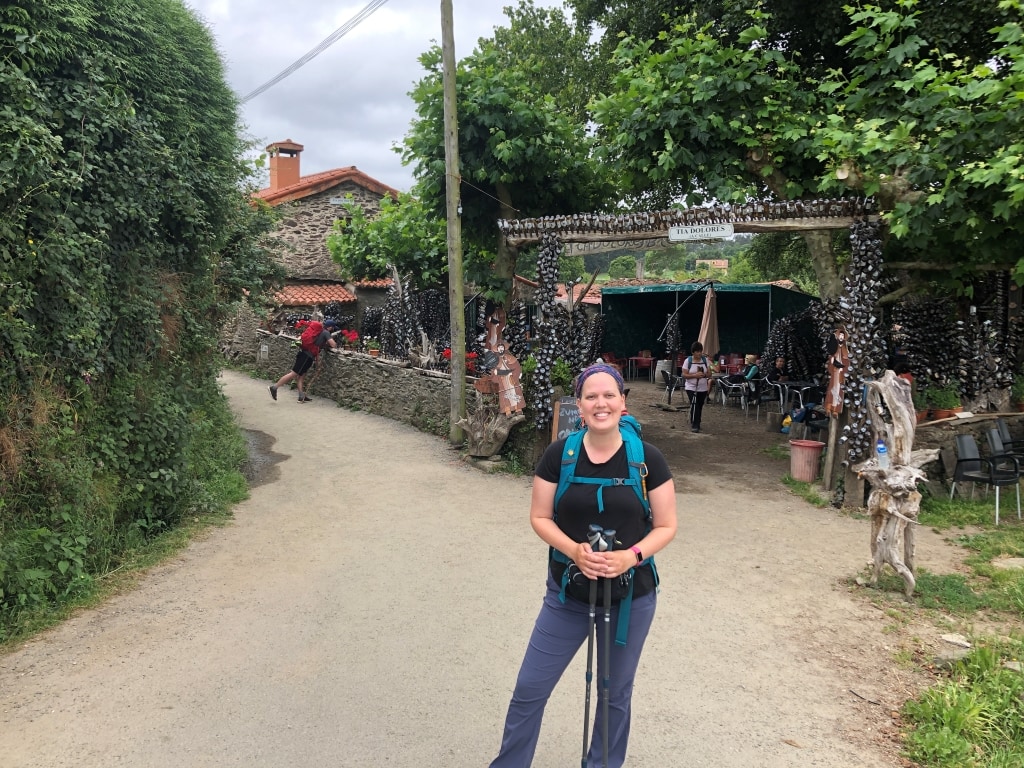
Unfortunately, not all packs fit everyone the same — or perfectly for that matter. But, here are some tips on how to get the best fit.
Pick out a men’s, women’s, or unisex pack — it doesn’t really matter which one you get as long as it’s comfortable.
You’ll also notice that some packs come in different sizes based on torso length (or are adjustable). Compare the sizes to your torso length.
Next, load your pack with weight (around 10% of your body weight).
Adjust the pack properly (detailed in the next section).
Walk around for about 30 minutes with the pack on. Pay attention to the shoulder straps, the hip belt, and anything else that rubs you the wrong way.
How to Adjust a Backpack for Hiking the Camino
You don’t want all weight of your backpack on your shoulders. At worst, you could even injure yourself and derail your plans! Instead, take the time to ensure your pack is adjusted properly.
Adjusting the straps on the pack will distribute most of the weight to your lower body, making your pack feel lighter and allowing you to carry it for hours on the trail.
Here’s how to adjust your pack correctly for the Camino:
- Step 1 – Pack the backpack, and tighten all the compression straps on the front and sides of the pack
- Step 2 – Loosen all the shoulder, chest, and hip straps
- Step 3 – Put the backpack on, and fasten and tighten the hip belt over your hips
- Step 4 – Pull the shoulder straps into place near your sides
- Step 5 – Fasten the chest strap and tighten
- Step 6 – Lastly, tighten the load lifter straps (the straps at the top of your shoulders)
Tighten the straps as much as they can go except for the load lifter straps, which you can tighten to your comfort. The pack should be snug and move with your body, not fight against it.
The straps will come loose throughout the day, and certainly from day to day. For the most comfort, loosen all the straps and re-adjust every time you put on your pack.
This video explains how to measure your torso length and adjust your backpack correctly. ⤵
Tips for Training With Your Pack
Whatever backpack you choose, you’ll want to train with it fully loaded. Start small by wearing it around your house.
Next, go for a few short walks with the pack on, working your way up to several moderate hikes.
Pay attention to how your body feels and if there are any dealbreakers (like chaffing or pain) that would cause you to change packs.
Backpack Transport on the Camino
If you do not want to carry your pack for any reason, use a pack transport service.
Simply pick which albergue you’d like to stay in each day, and make a reservation either online or through your albergue.
Before you head out each morning, leave your bag in the designated spot. While you’re walking, the backpack taxis will deliver your backpack to your next albergue.
The price for luggage transport is around 5€ ($5.80 USD) per day. Within 100km of Santiago, it is around 3€ ($3.50 USD).
Other Bags for the Camino
In addition to a lightweight hiking pack, we recommend you take one smaller bag as well. In this bag, carry all of your valuables and most frequently used items.
Choose a lightweight daypack, fanny pack/waist back (bum bag), or crossbody bag. (We wear a fanny pack and take a packable day pack to use as needed.)
You will need this bag:
- When paying for things or getting stamps in your credencial during the day — a fanny pack is great for this so you don’t always have to remove your pack.
- When showering. Don’t leave your valuables lying around the albergue. Instead, bring your bag with you. There’s no room for your big, stinky pack in the clean shower stall!
- When shopping, exploring, and eating dinner in the afternoons.
- On days when you need a rest and choose to pay for luggage transport.
Accessories for Your Camino Backpack
Here are some useful items for your backpack to add to your Camino packing list.
Packing Cubes

Packing cubes and/or dry bags are a must for keeping yourself organized. You don’t want to dig around in your pack every time you need something — which is every day. Plus, dry bags keep wet items separate.
Rain Cover

Not all backpacks come with a waterproof rain cover, so you may need to purchase one separately. Store it in a small dry bag.
Carabiners and/or Safety Pins

A handful of carabiners and/or large safety pins always come in handy when you want to attach things you don’t want on the inside of the pack, like a pair of wet flip flops.
Safety Whistle

Your pack may have a safety whistle built into its chest strap. If it doesn’t, consider picking up a safety whistle or a personal alarm for emergencies.
Camino Backpack Patches

If you want to decorate your backpack, you can get a Camino patch for your backpack on etsy or a fun hiking patch on Amazon.
Camino de Santiago Backpacks FAQ
What size backpack do I need for the Camino de Santiago?
A 30-40L pack is sufficient for the Camino. If you don’t find one you like in that range, just try to stay in the 28-45L range.
Do I need a women’s specific backpack?
Women’s specific backpacks are cut specifially for a woman’s body meaning they have a shorter torso, narrower straps, and different hip placement. However, you don’t necessarilly need to get a women’s specific backpack. Rather, purchase the Camino pack that fits your body the best.
How tall should my backpack be?
The height of your backpack depends on your torso length. First, measure your torso length prior to purchasing a pack. You also want to make sure that the backpack isn’t so tall that it hits the back of your head.
Where can I get a Camino de Santiago backpack patch?
Many pilgrims decorate their packs with patches, shells, pins, and the like. You can buy these on the trail or on etsy. Although entirely a personal choice, patches help to build camaraderie as you recognize other pilgrims with similar interests or from your home country.
Do I need a shell for my backpack?
Is it not required to wear a shell on your backpack on the Camino. But if you would like, feel free to add a shell with the St. James cross to denote you are on pilgrimage. Alternately, you may like to pick one up at the end of your journey to celebrate your success.
You can purchase shells online or at any pilgrim’s tourist shop along the way.
Does the quality or brand of the pack matter?
While the brand doesn’t really matter, the quality of your backpack does. You’re going to be out on the Camino walking for at least a week, and you want to be comfortable.
Beyond your trip to Spain, a good pack will last for years to come. Some brands even provide a lifetime warranty on their products.
Do I have to carry my pack the entire way?
While many people enjoy carrying their backpack, there are no “rules” stating that pilgrims must wear their backpacks on the trail. There are multiple pack transport services should you choose to have your bag transported.
Do I need a daypack?
In addition to your main pack, take a fanny pack/waist back (bum bag), crossbody bag, and/or lightweight daypack. In these smaller bags, store your valuables and items that you use often (your pilgrim’s passport, for instance). Plan to take this bag with you everywhere in the afternoons and evenings while your main pack is at your accommodation.
I’m only walking the last 100km from Sarria. Do I need to spend the money on a good pack?
Yes. It does not matter if you are walking 5 days or 5 weeks. You need a good pack to distribute the weight properly on your body. Consider the backpack an investment; a good quality pack will last for years through many trips.
Is there a “right” way to pack a backpack?
When packing a backpack for the Camino (or any trip), a well-packed backpack will help you to distribute the weight. Typically, heavier items should go in first towards the bottom and back of the pack. Lighter items go on top.
Is buying a Camino de Santiago backpack it worth it?
No matter if you’re walking the Camino de Santiago for a week or 30 days, a good Camino bag will do wonders for your body.
These hiking packs are all designed to take the strain off your shoulders and direct the load to your hips and legs. This is imperative as you’ll be walking hours on end. You want to give your body the best chance of making the trek safely!
Also, consider the Camino backpack an investment. That is, a high-quality pack will last for years through many trips. They are especially necessary when backpacking Europe. Many brands also have lifetime warranties.
I hope this guide serves you in choosing the best backpack for the Camino de Santiago.
¡Buen Camino!
Camino de Santiago Travel Guide
🏨 Where should I book accommodations for the Camino?
Search Booking.com hotels, hostels, B&Bs, and guesthouses on the Camino.
🚉 How do I buy train or bus tickets in Spain?
Search for train tickets in Spain on Omio which will show you the best selection of trains and buses. Trainline and Busbud are also great to cross-reference, as no one platform has every route!
📱 Where can I get cellular data for Santiago de Compostela?
Try using Airalo, the world’s first eSIM store! Download, and install your eSIM, and get connected as soon as you land.
📃 Should I buy travel insurance for the Camino de Santiago?
Yes! Protect your investment from trip interruptions to unexpected injuries — compare rates on Travel Insurance Master and SafetyWing (which has some of the cheapest rates when you subscribe to a 1+ Month plan).
🎒 How can I book backpack transport on the Camino?
To arrange for backpack transfer on the Camino, check with Jacotrans or Pilbeo.
✈ What are the best sites to book flights within Spain?
Search Skyscanner for best flights that other search engines miss!
🏙 Where do I find the best Santiago de Compostela tours?
Search for top-rated Santiago de Compostela tours or day trips (with reviews!) on Viator and/or Get Your Guide.
🥾 What should I pack for the Camino de Santiago?
Download the Camino de Santiago packing list.
Go to our resources page for more booking tools we use to plan our trips.
Pin it!
